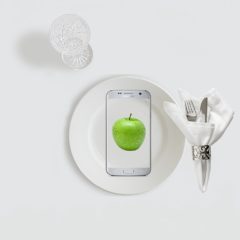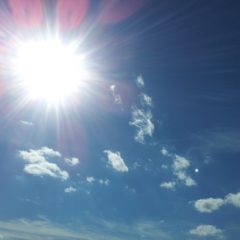A couple of weeks ago, I sprained my ankle. I was working in my garden in an area that’s separated by a stone wall. One moment I was on top of the wall and the next, I was rolling around on the ground. I had somehow fallen off the wall and rolled my ankle. My initial reaction was, “S***!, this is really going to hurt”. And then it really did hurt. However, when I got back on my feet, it didn’t feel so bad after all, so I kept working.
I thought my ankle was fine until later that evening. We were at a friend’s house, and as the evening wore on, the ankle became more and more painful, until I couldn’t hold still. By that time I was wishing I’d taken my momentary lapse in coordination more seriously and given the ankle a little more attention. But too late—I was out for the evening, and this thing hurt.
In Chinese medicine, sprains are considered damage to your sinews, which is an old-fashioned word for anything to do with your tendons, ligaments, cartilage, or joint capsules. A sprain can occur at almost any joint, and is the result from taking a hit, over extending, twisting, wrenching, or any other trauma. A sprain causes pain, dark purple bruising, swelling, and loss of range of motion. And pain. Did I mention how much a sprain hurts? A sprain is painful because you have either pulled the tendons or ligaments beyond their capacity, or damaged the cartilage or joint in some way that’s not good.
In Chinese medicine, this kind of injury is considered a blockage of energy and blood. Essentially, nothing is moving through the injured area, and you can see the stagnation in the swelling and purple bruising around the joint.
The first order of business in Chinese medicine is to get the energy and blood moving, relieve the pain, and soothe the injured tissues, so they can heal. If a sprain doesn’t heal properly, over time wind, cold, and dampness can move into the joint. You will know if this has happened if the injured joint feels chronically sore, or if that joint feels achy whenever it rains, gets cold and damp outside, or when the weather changes in general.
Your acupuncturist may use a number of methods to heal a sprain. They will likely start with acupuncture, possibly inserting needles into something called A-Shi points, which are spots that are tender when they’re touched. Don’t worry—inserting a needle into those points isn’t necessarily painful, it just gives your acupuncturist a good idea of where to start. Your practitioner may also ask you to move the injured joint or he may warm the area while the needles are in place.
Your body works like a hologram in that there is a map of your entire body in each individual part. Think about the DNA in each of your cells which contains the building instructions for your entire body, or foot reflexology, in which all your organs are represented on the sole of your foot. In a similar vein, if the injured area is too inflamed or painful to needle, your acupuncturist may choose to needle the same joint on the opposite side of your body. For example, if your right ankle is sprained and looks like a big purple grapefruit, your acupuncturist may work on the left ankle, which can be just as effective.
Your acupuncturist may also perform ear acupuncture to help heal a sprain. Like foot reflexology, your ears also contain a map of your entire body, and are easier and less painful to needle than the bottoms of your feet. An herbal formula may also be used to move or quicken the blood and relieve the pain. Once the initial trauma of a sprain has passed, Tui Na massage can also be effective in decreasing swelling and improving the range of motion in the injured joint.
Some self-care tips for a sprain that you can do at home include:
- Right after the injury has occurred and for the first 24 hours or so, apply ice to the area to control the swelling. Be careful not to put ice packs directly on your skin, as it may burn the area. While heat is generally used in Chinese medicine, it’s used later in the healing process to increase circulation to the area.
- Wrap the area with an ace bandage, but not so tightly that you cut off the circulation. By applying compression in this way, you’re limiting how much the area can swell, which in turn limits the pain. Also, wrapping the area immobilizes it, which also helps decrease the pain.
- Elevate the injured area—also as a way to limit the swelling.
- While you may have figured this out for yourself, quit using the injured joint until you can do so without causing yourself serious pain.
- If the pain is excruciating, don’t be a martyr, take something like ibuprofen or Tylenol.
With my ankle sprain, the pain became so intense that I took an ibuprofen that first evening, which took the edge off the pain. I wrapped the ankle in an ace bandage, got some acupuncture, wore unattractive shoes for about a week, and then gimped around for another week until the ankle calmed down. I was lucky; while I can still feel moments of weakness in the ankle, it has healed almost completely.




Many people think of acupuncture for chronic pain and do not realize that it is highly effective for recent acute injuries. Receiving acupuncture immediately after incurring a mild to moderate sprain/strain speeds the healing and prevents the injury from becoming chronic.